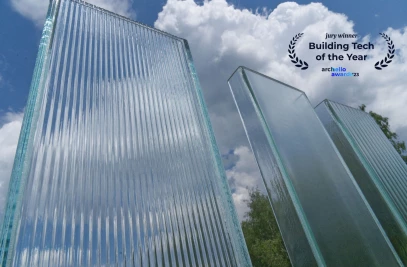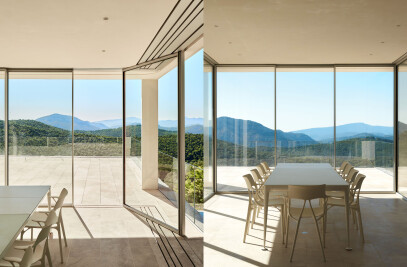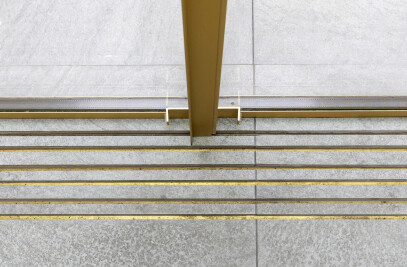Set amidst lush riparian trees on a piece of land overlooking the Hrabinka lake in Czechia, the tea house pavilion is an intervention in public spaces designed as a part of the Mood for Wood International Workshop, crafted by Slovakian architecture firm Grau Architects.
The 9-square metre pavilion comprising a simple material palette of birch plywood and geotextiles reflects the architecture of traditional Japanese tea houses with a hint of contemporary elements.
The pavilion features a minimal, open construction that sits in harmony with the surrounding environment, immersing one in views, sounds and movements of nature.
The interiors seek inspiration from the customs of a traditional tea ceremony and contain only a low table around which six people can sit comfortably, embodying a sense of intimacy.
The final design is a spatial expression of several rules of the traditional tea ceremony. For example, while entering the pavilion, each visitor has to bend down to pass under the lowest horizontal beam, referring to a niriji-guchi door, an emblem of equality between all the ceremony participants. Additionally, a rectifying opening provides views of the reservoir, allowing visitors to sit and relax. The open frame gives a glimpse of the ceremony to the passers-by.
Therefore, the pavilion reflects the Japanese fundamentals of purity and minimal aesthetics, inviting people to contemplate, observe and immerse themselves in the beauty of its serene surroundings.












































